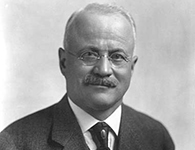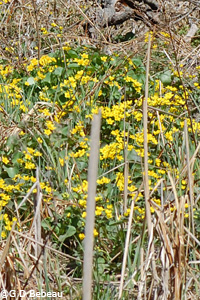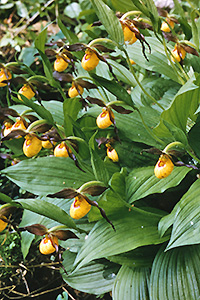
The Writings of Eloise Butler
Letter to Theodore Wirth
January 1914

I am often asked when one can derive the most benefit or pleasure form a visit to the wild garden. Every week, from April through October, presents new attractions. First are the early spring flowers, appearing a little later than in some other places, on account of the deeper shade in the cup-like depression occupied by the bog. There is an unparalleled display of marsh marigolds, making golden vistas through the tamaracks and surrounding marshes, accompanied by the fragrant white violet and all the other notable flowers then due, indigenous or introduced, from other parts of Minnesota.
Within a space of twenty acres may be seen in an hour what would be impossible to find in traversing the state for several days. From May on, the ferns, some forty species in all, compel attention, from the time that the woolly crosiers of the interrupted fern unroll, densely clothing with its long fronds the wooded slopes, even until winter, when the evergreen species are conspicuous against the snow. In the latter part of May, the hawthorns transcend description, freighted with white flowers, from which, in the fall, will mature bright red fruits.




About decoration day, the much admired yellow and pink lady’s-slippers are in bloom. June brings the roses, the strange flowers of the pitcher plant, and the marvelously beautiful showy lady’s-slipper. In July, the garden is resplendent with lilies, while in August, the meadow flowers are in full force, forming brilliant mosaics of white, blue, yellow, and red.
Again, not one of the the city parks surpasses Glenwood in scenic beauty during autumn, offering, with its morainic hills and ponds, wide-spreading views and a great variety of landscape. In addition to the common autumnal foliage, swamp maples yield vivid scarlet, and numerous white oaks, rich tints of mulberry red, set off by the white stems of birches and the dark green foliage of tamaracks, while the meadows are blue with gentians and the hills carpeted with asters, unaffected by frosts.
Photo below: Fall foliage in Glenwood Park (now Theodore Wirth Park) with the Upland Garden in the foreground - photo by Martha Crone on Oct. 24, 1955.
